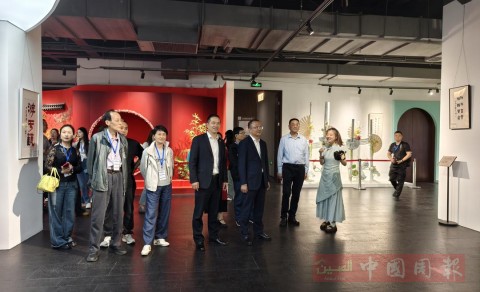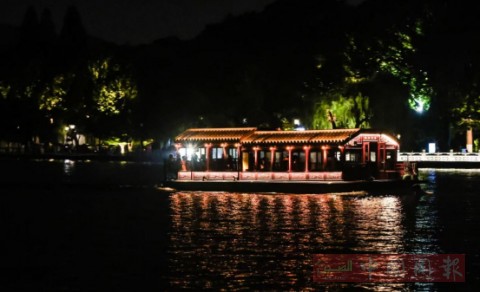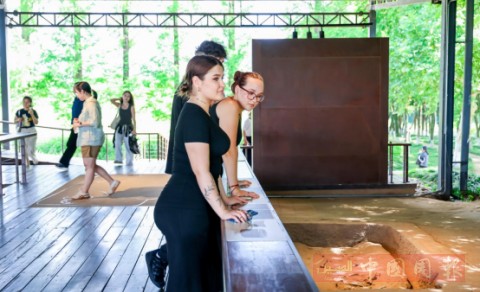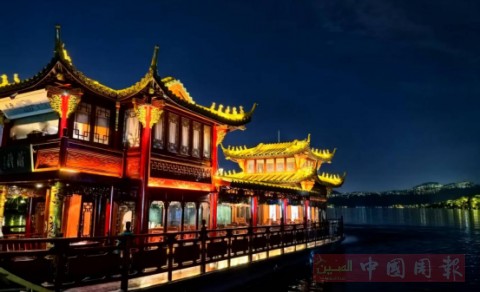To mark China’s 20th annual Cultural and Natural Heritage Day, reporters visited three of Hangzhou’s UNESCO World Cultural Heritage sites—West Lake, the Grand Canal (Hangzhou section), and the Liangzhu Ancient City Ruins—to explore how the city is innovating in the protection, inheritance, and revitalization of its cultural heritage.

Chinese and international guests taking a group photo by the Grand Canal in Hangzhou
The Grand Canal, the first in China to traverse mountainous terrain, has played a pivotal role throughout history in unifying political governance, integrating regional economies, enabling long-distance transport, and fostering cultural exchange. It remains one of the world’s most influential waterways and a milestone in global canal history.
According to Fang Youqiang, Director of the Integrated Protection Center for the Hangzhou Section of the Beijing–Hangzhou Grand Canal, the Hangzhou section is where the canal most deeply intertwines with everyday life. For generations, residents have lived along its banks, and the city’s prosperity has flowed from it. “The Grand Canal links north and south, connects rivers to the sea, and has long supported China’s national integration and its dialogue with other civilizations,” Fang noted. “It is not only a powerful cultural symbol for the Chinese people, but also a national emblem of heritage.”

Visit the Gongchen Bridge Historical and Cultural Street of Hangzhou Grand Canal
In recent years, Hangzhou has successfully transformed former industrial zones along the canal into vibrant public spaces. The former Hangzhou Iron & Steel Plant was repurposed into Grand Canal Hanggang Park, preserving iconic structures such as blast furnaces, coke ovens, and silos. The park now regularly hosts lifestyle festivals and open-air concerts. Likewise, the old Hangzhou Oxygen Plant has been reborn as the Wulin Star Exhibition Center, blending art, commerce, and cultural innovation.As a recognized World Heritage site, the Grand Canal has become a dynamic stage for cultural renewal. Seven themed museums—such as the China Grand Canal Museum—have been built along its route, each offering a distinct and immersive experience.
Ye Min, a local resident who has lived by the canal for more than a decade, reflected on the area’s remarkable transformation: “When I moved here in 2005, it was still surrounded by old factories. After years of restoration and gaining World Heritage status, it’s become more beautiful and vibrant. I often take friends to visit the museums now—it’s something to be proud of.”
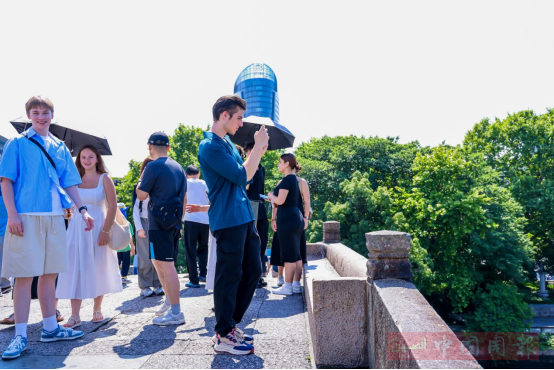
A stroll across Gongchen Bridge on the Grand Canal in Hangzhou
Fang explained that Hangzhou has closely integrated heritage protection with improvements to urban living, ecological restoration, and economic transition. For example, the comprehensive West Lake preservation project restored public access to scenic waters, adopted smart management techniques, and greatly enhanced both the cultural atmosphere and the city’s overall appeal. Similarly, revitalization of the Grand Canal has led to improved water quality, reconfigured historical street patterns, and reinvigorated local culture. Especially notable is the adaptive reuse of former industrial facilities—now transformed into cultural hubs and creative industry clusters—bringing new life and contemporary energy to the ancient canal banks.
At the China Knives, Scissors, and Swords Museum, French student Théo Lexcellent carefully painted an oil-paper umbrella by hand. He arrived in China earlier this year to study Mandarin and chose to settle in Hangzhou, drawn by its natural beauty and cultural richness.

A stroll across Gongchen Bridge on the Grand Canal in Hangzhou
“The Grand Canal is as vital to China as the Seine is to France,” Théo remarked. “Waterways are essential to a country’s development, and making this umbrella myself gave me a much deeper appreciation of the canal’s heritage.”
“Gaining World Heritage status brings a site under international protection and professional conservation frameworks,” said Yang Jianwu, President of the Zhejiang Association for Cultural Heritage Protection and Distinguished Expert at the Zhejiang Urban Governance Research Center. “Strict conservation standards help preserve a site’s authenticity and material integrity, protecting it from natural and man-made threats and securing its value for future generations.” “Through cultural heritage,” Yang added, “people from different regions and countries can discover the essence of Chinese civilization, fostering a stronger emotional connection and deeper mutual understanding.” (End)


